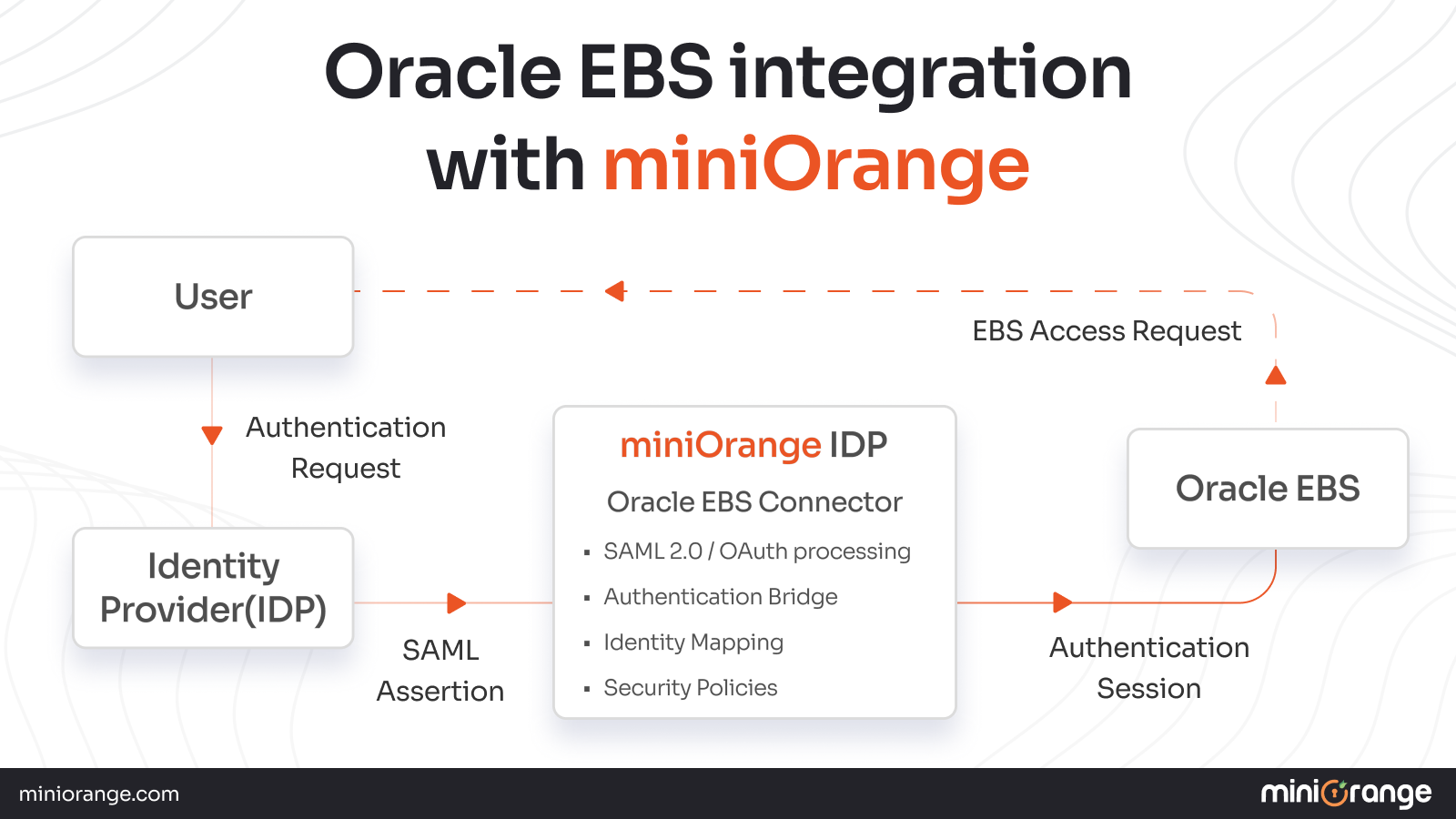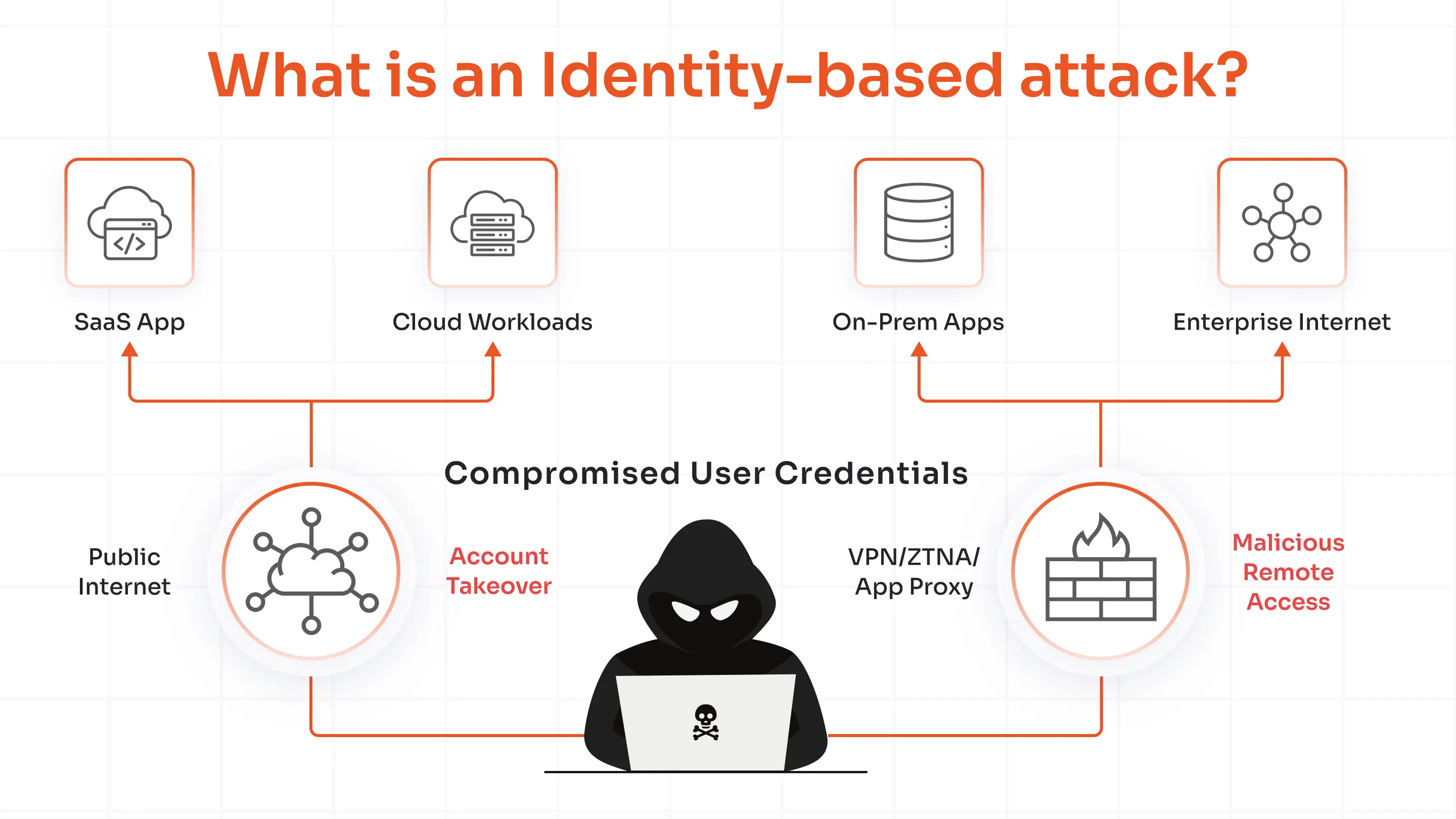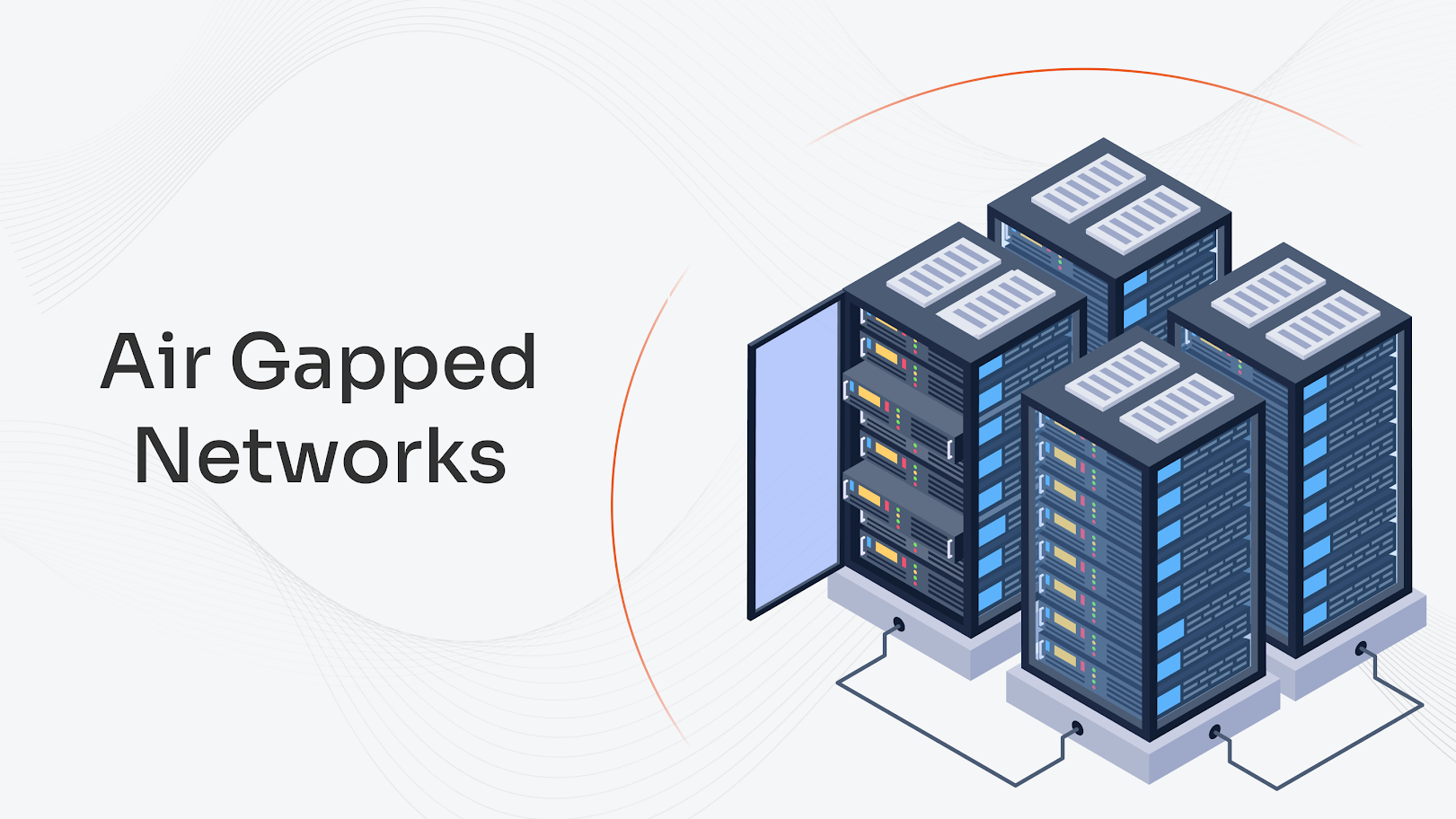Oracle E-business suite is used by thousands of organizations that have customized business processes and complex core operations, with an astounding market share of 42.57% in ERP. Traditionally, Oracle EBS SSO setup is complex and time taking, however, Oracle is committed to on-prem EBS support through at least 2034 according to ERP today. Therefore, to protect your organization fast and efficiently, you need the convenience of logging into your entire suite with just one click i.e. a single sign-on.
miniOrange helps enable that quickly and efficiently using a lightweight Oracle EBS SSO Connector. This makes security and user experience reliable and hassle free within just a few minutes. This article aims to shed light on what Oracle EBS SSO is, its benefits and needs, how miniOrange SSO improves security and user experience on Oracle EBS platform.
What is Oracle EBS (Enterprise Business Suite) and Why Do You Need SSO to protect it?
Oracle E-Business Suite (EBS) is a suite of enterprise applications that are integrated to align with core business functions that encompass the functional areas of finance, HR, supply chain, manufacturing, and customer relationship management.
EBS can be on-premise or in the cloud, and is provided with modular, scalable, and customizable solutions that fit the needs of any business.
EBS connects business processes and integrates the workflows/data between departments, and provides:
- Integrated repository and reporting of real-time data
- Standardized process across the enterprise
- Integrated compliance process controls, audit-ready
- Scalability to support growth, with the total cost of ownership minimized
EBS eliminates data silos, connects business processes, and underwrites operations as the nose of the enterprise.
Why are Security and User Experience Important?
Modern applications face unprecedented threats, ranging from cyberattacks and data breaches to compliance.
The implications of failing to secure applications like EBS can be dire, including fines, loss of confidence, and business continuity.
Strong security means:
- Multi-factor authentication
- Centralized identity management
- Encryption for information services with sensitive or confidential data
- Continuity planning is built into your business plans
And great user experience drives productivity:
- Effectiveness, efficiency, and satisfaction -- a seamless user experience when logging in
- Quick log in using a consistent (and responsive) interface with all applications
- Reduced helpdesk loads for authentication, password, or log in issues
- Increased employee satisfaction and adoption rate
The right balance of security and usability allows your business to innovate, digitally transform, and achieve competitive advantage.
What is Single Sign-On (SSO) and Why is it Necessary for Enterprise Business Suite?
Single sign-on (SSO) means the user can authenticate once with a trusted Identity Provider (IdP), and then securely access one or many applications (including EBS), without reentering credentials.
Here's how it works:
- User logs in to the IdP.
- The IdP generates a secure token.
- An application, like EBS, acts as a Service Provider and the secure token is accepted as an authentication and login to the application and the login is complete.
Benefits of implementing SSO on EBS:
- Less passwords means lesser attack surface which implies less likelihood of your organization's credentials to be compromised or misused.
- The identity management security policy is initiated, enforced, and audited centrally in a consistent manner.
- Less workload on IT and less password resets or related requests
- Better productivity one credential manages authentication across multiple applications
EBS is a mission-critical business process. SSO provides security and usability for EBS allowing you and your corporate warriors to focus on business, not logging in.
How SSO Improves Security and User Experience in Oracle EBS?
Oracle EBS holds sensitive financial, HR, and operational data, so security, compliance, and productivity is supported by better authentication and simplified access.
Security value:
- One central authentication - All logins come through a single Identity Provider, making enforcement of security policies and anomaly detection easier.
- No password fatigue - Users only have one strong credential to care about and reduces the possibility of developing bad habits such as using the same credential for multiple accounts or writing it down.
- Better access controls - Role assignments in the IdP and EBS support better governance and audit-readiness, ensuring that users with different roles see/use what they should.
- MFA Ready - Add multi-factor authentication for modules with sensitive data such as Payroll and Payments, adding additional security.
User experience improvements:
- One login - the employee has to sign into the EBS application only once and does not have to manage an additional password to remember, increasing efficiency by reducing customer lockouts and resets.
- Seamless switching- the employee is able to switch to an EBS application from other pre-identified applications without logging in again and having to shuffle their workflow.
- More productive - less time logging in equals more time spent on business activities that add value.
Quick tips to make it work:
- Choose an IdP such as miniOrange that supports SAML/OIDC that can be configured as an identity provider for Oracle EBS, then integrate into Oracle EBS as a trusted application.
- Map IdP user groups to EBS responsibilities (i.e. "Oracle Cloud Grants"). This way, if the responsibilities are automatically assigned or removed based on group membership, even though the business rules require manual intervention.
- Institute MFA for higher-risk functions to dilute damages and mitigate compromised accounts.
- Align session timeouts on the IdP and EBS systems to minimize unexpected logouts or sessions lingering too long.
- Oracle EBS SSO helps you increase security and simplify access while reducing frustration to create speed to value for employees and a win for IT teams.
Role of miniOrange in Implementing SSO for Oracle EBS

miniOrange is a leading Identity and Access Management (IAM) solutions provider. Their IAM solutions focus on Single Sign-On (SSO), Multi-Factor Authentication (MFA), and secure user provisioning. miniOrange is known for its various integration capabilities that help organizations centralize authentication, promote security and enable greater access across both cloud and on‑prem system infrastructures.
For Oracle E-Business Suite (EBS) specifically, the miniOrange solution is built to deliver SSO solutions customized to link to identity providers such as Azure AD, Okta, or on-prem Active Directory. It supports standard protocols SAML and OIDC that make direct access easy to EBS with secure one-click access without adding to password fatigue or tickets to the help desk.
What's better? The miniOrange solution goes beyond merely improving security and access. It enables the use of additional MFA options (TOTP, push, biometrics, hardware tokens), sets up Multiple Role-based access control, and allows custom login screens. Whether deployed on the cloud or on-prem, miniOrange provides Oracle EBS users with fast, secure, and compliant access to get their jobs done.
There is a great example of how one organization increased their efficiency by using the miniOrange solution. A globally recognized manufacturer stuck with multiple logins for EBS adopted the miniOrange SSO solution combined with Azure AD integration and adaptive MFA. In less than a month, the number of password reset tickets dropped by 70%, their policy was better enforced, and their end-users were delighted about having seamless access.
Overall, miniOrange provides a solution that fills the gap between security and user experience to the Oracle EBS platform by centralizing authentication, protecting sensitive business information, and optimizing productivity without infringing on the users' day-to-day work effort.
Key Benefits of SSO in Oracle EBS
SSO (Single Sign‑On) for Oracle E‑Business Suite is not only a means of logging in, but it is a way to change how securely, efficiently, and happily your teams do their work. Here’s how it delivers value across security benefits, usability, IT management, and cost.
Improved Security Posture
Routing all logins through a single IdP creates policy consistency and provides more robust access control of Oracle EBS. SSO authentication with MFA reduces the chances of credential reuse along with providing another secure barrier to phishing or brute-force attacks.
Enhanced User Satisfaction and Adoption
A single seamless sign-on negates password fatigue and provides for continuous workflows. When users can seamlessly flow between EBS and associated applications without the frustration of repeated login processes, satisfaction increases - yielding higher adoption and more consistent engagement.
Simplified IT Management
Managing all authentication credentials from a single platform removes duplicate administration by IT and lowers the time needed to respond, and implement changes to access requests. The amount of time saved through the reduction in password resets allows IT to be more efficient in responding to other strategic initiatives without worrying about management password resets or responding to service desk tickets.
Cost Savings
The entire authentication process becomes seamless and credentials management reduces login downtime while improving productivity. Over time the reduced service desk tickets (and more secured platform – meaning reduced overall exposure to breach related costs) and faster access create a return on investment that is measurable.
With the right SSO solution, Oracle EBS is far quicker to access, easier to manage, and much more resilient to threats, thus providing benefits that multiply over time for both users and the business.
How to Implement SSO for Oracle EBS
Step by Step Implementation Guide
A well planned Oracle EBS SSO implementation can make the difference between a calm, low-risk SSO go-live and a chaotic, high-friction one. You can execute these steps in your Oracle EBS integration both reliably and securely, preparing for onboarding afterwards.
- Assess Current Environment - Make sure that you're fully aware of your version of Oracle EBS, the existing authentication flows, and any identity system present in your environment.
- Choose the Right IdP - Choose an IdP that can support SAML/OAuth/OIDC standards, preferably one with a proven history with EBS.
- Design Integration Architecture - Consider how EBS will communicate both to the IdP, and to other applications. Configure SSO in Oracle EBS - This is when you should configure EBS/SSO profiles, authentication levels, and point to any IdP metadata.
- Implement MFA - Ensure that employees are using MFA on critical modules like payroll or approvals, as appropriate.
- Test in Staging - Perform authentication, provisioning, and failure mode testing before going live.
- Implement in Phases - Start with a small targeted group (the pilot), and rollout more broadly after that.
- Train Users and IT - Provide quick start guides, FAQs, and continue to show support to users after going live.
Taking this kind of methodical approach will not only prevent you from making technical blunders; it will also build trust and credibility with end-users, leading to better long-term success in SSO delivery in Oracle EBS.
Best Practices in Oracle EBS SSO
True success in the SSO project is found in staying secure, sustainable, and easy to support after the go-live. The best practices below should be followed to make sure that your performance and trust are sustained!
- Keep IdP Highly Available - Create redundancy so that you keep more authentication uptime.
- Enforce Strong Authentication - Enforce MFA or an adaptive access model on top of your SSO.
- Minimize Custom Code - If you can avoid custom code like native connections (no matter how simple), it will make subsequent maintenance easier down the road.
- Monitor, Review and Audit Logs - Monitoring logs will capture unexpected behaviors sooner, and also enforce compliance.
- Have a Break-glass Login - Ensure that there is a break-glass path (admin/system/user role) in case it stops being available.
- Communicate Upfront and Continuously - Communicate with users again during the initial phase of deployment, to make sure they know how to check their account, and then continue visibility of support post go-live.
These continued vigilance, additional layers of security, and on-going pro-active interactions help keep your Oracle EBS SSO implementation off to a good start, and then maintain its security and reliability for subsequent years.
Getting Started with miniOrange for Oracle EBS SSO
Implementing SSO in your Oracle E-Business Suite provides a double benefit: security is enhanced through a centralized authentication process, the use of multi-factor authentication (MFA), and improved access control; and your users' experience is enhanced with simplified, one-click access to EBS and its enterprise application partners, which will result in less password risk, simplified tasks with less overhead for IT teams and provable productivity.
miniOrange enables you to implement a quick transition with defined solutions for Oracle EBS SSO, multiple deployment models and broad identity provider function. If you are looking to protect sensitive data and reduce friction in the login process while preparing for the future of authentication, this is the time to learn more about how miniOrange can implement secure, scalable SSO in your Oracle E-Business Suite environment.
FAQs
What is the difference between traditional login and SSO?
In traditional login systems, the user has to enter a username and password into each separate application to login into each application. Using Single Sign-On (SSO) means the user only builds their identity once to log into a number of related applications without having to re-enter their identity into each one.
Can SSO integrate with other enterprise systems apart from Oracle EBS?
SSO can be used with many enterprise applications including Oracle EBS or SAP, Salesforce, Microsoft 365, ServiceNow to name a few, as long as they support some form of user authentication that accepts and or supports standard protocol methods. Common protocols include SAML, Oauth, or OpenID Connect.
Is SSO secure for large enterprises using Oracle EBS?
SSO can be secured for large organizations using Oracle EBS, assuming its implementation and configuration are done correctly. SSO uses central authentication, supports secure authentication standards, and will offer multi-factor authentication. For these reasons, organizations should use good security hygiene when selecting their SSO provider.




Leave a Comment